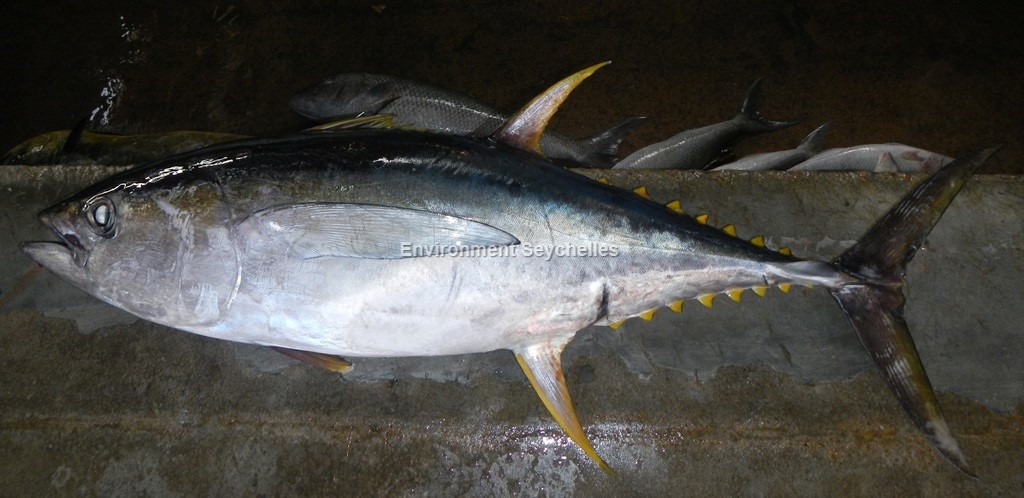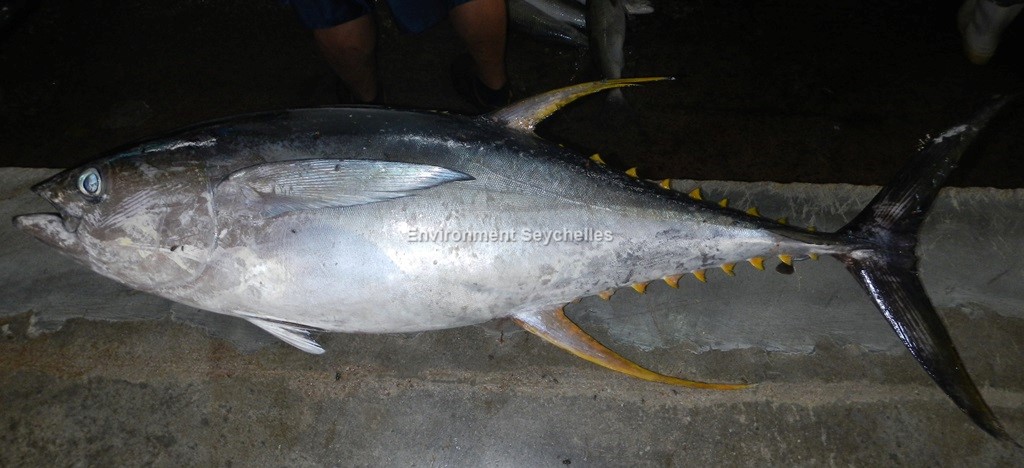Description:
Dorsal spines: 11-14; Dorsal rays: 12-16; Anal spines: 0; Anal soft rays: 11-16.
Large species with elongate, fusiform body, slightly compressed laterally. Some large specimens have very long second dorsal and anal fins. Dorsal fins separated by narrow gap. The second dorsal followed by 8-10 finlets. Anal fin followed by 7-10 finlets. Pectoral fins moderately long, usually reaching beyond second dorsal fin origin but not beyond end of its base. In juveniles pectoral fin tip rounded. Caudal peduncle very slender with a strong lateral keel between 2 smaller keels. Caudal fin with central marginal notch.
Colour. Metallic dark blue dorsally changing though yellow to silver ventrally. Ventral surface and flanks often with approximately 20 broken, near vertical pale lines. Dorsal and anal fins and finlets bright yellow. Finlets with narrow black border.
Size:
Maturity: Lm 103.3cm FL, range 78 - 158 cm FL. Max Length: 239cm FL. Commonly to 150cm TL.
There is considerable regional variation in maturity size, authors appear to agree however that all fish over 120 cm TL have attained sexual maturity.
Habitat and Ecology:
An oceanic species, occasionally seen near reefs (depth 1-250m, usually 1-100m). Forms mono-specific or multispecies schools usually by size. Also associated with floating debris. Feeds on fishes, crustaceans and squids. Eggs and larvae are pelagic. In the Indian Ocean, longevity is at least seven years, although very few individuals live past four years.
Fishery Status:
This species is not protected or subject to fishery regulations in the artisanal fishery. It is caught the hand line fishery, where it is a reasonably regular but generally not abundant component of the catch.
Catch limits have recently been by the IOTC on the industrial catch of this species where it is caught mainly with longlines and purse seines.
Notes:
References:
Collette, B.B. & Nauen, C.E. (1983). FAO Species catalogue. Vol. 2 Scombrids of the World. An Annotated and Illustrated catalogue of Tunas, Mackerels, Bonitos and Related Species Known to Date. FAO 1983. ISBN 92-5-101381-0
Collette, B. et al 2011. Thunnus albacares. The IUCN Red List 2011: e.T21857A9327139. http://dx.doi.org/10.2305/IUCN.UK.2011-2.RLTS.T21857A9327139.en. (02/06/19).
Froese, R. & D. Pauly. Eds. 2019. FishBase. https://www.fishbase.in/summary/143 (02/06/19).
Citation:



There are no comments